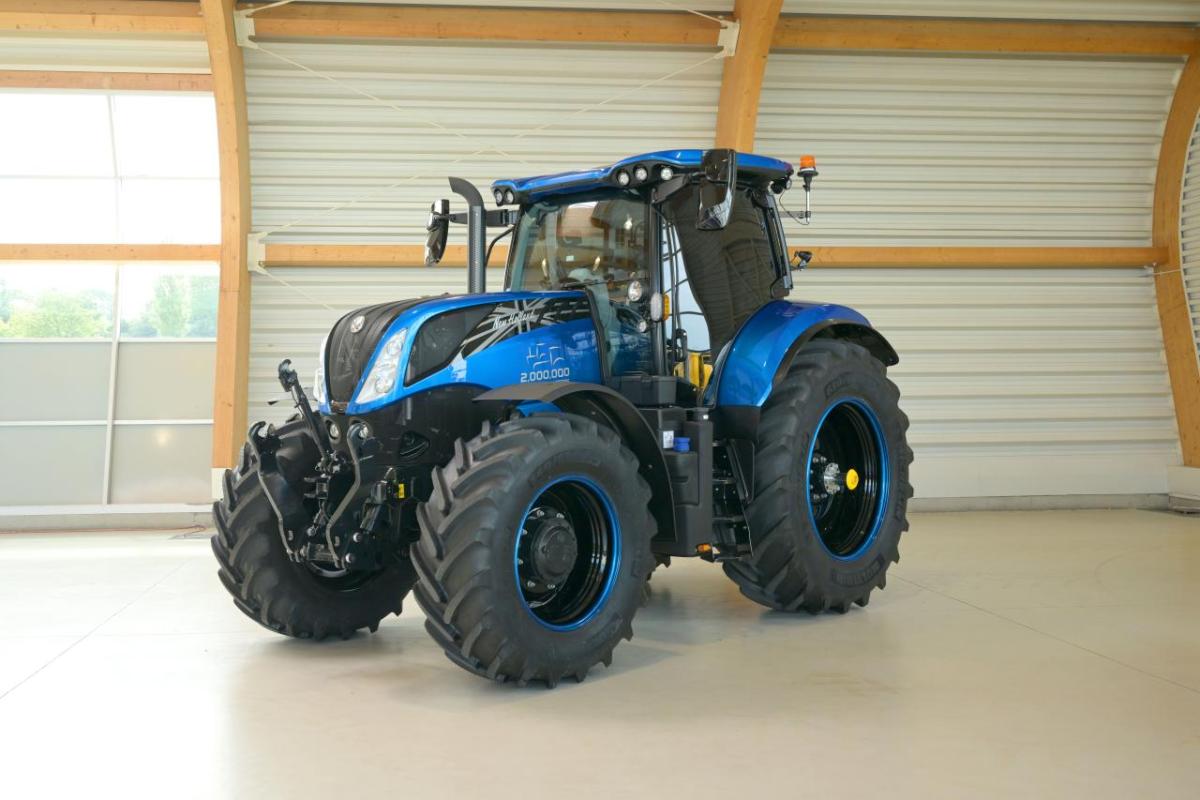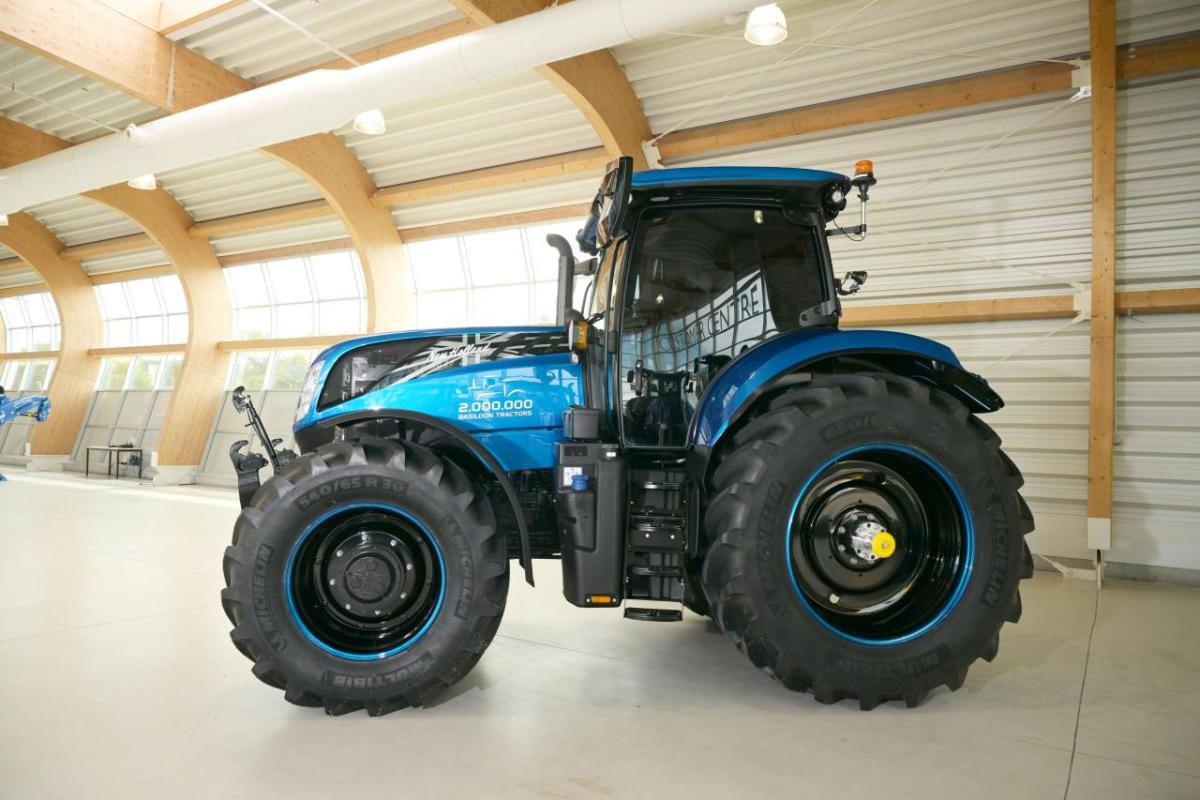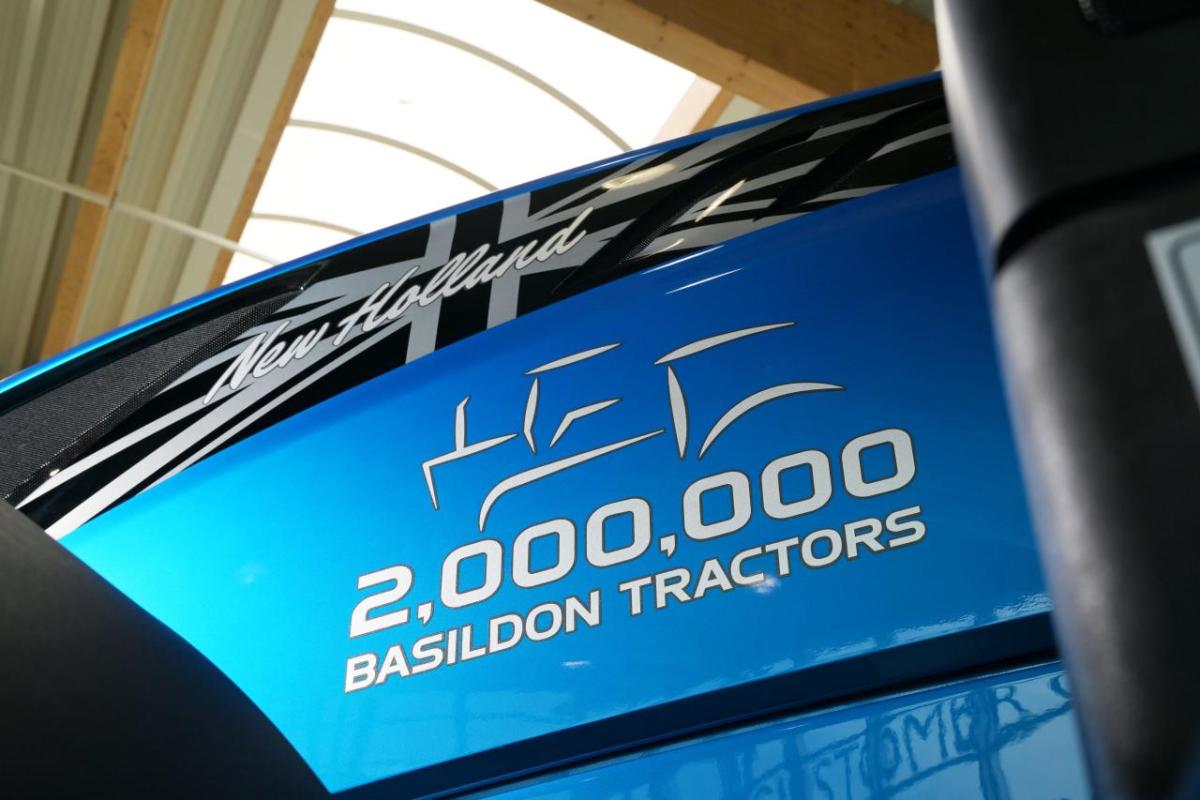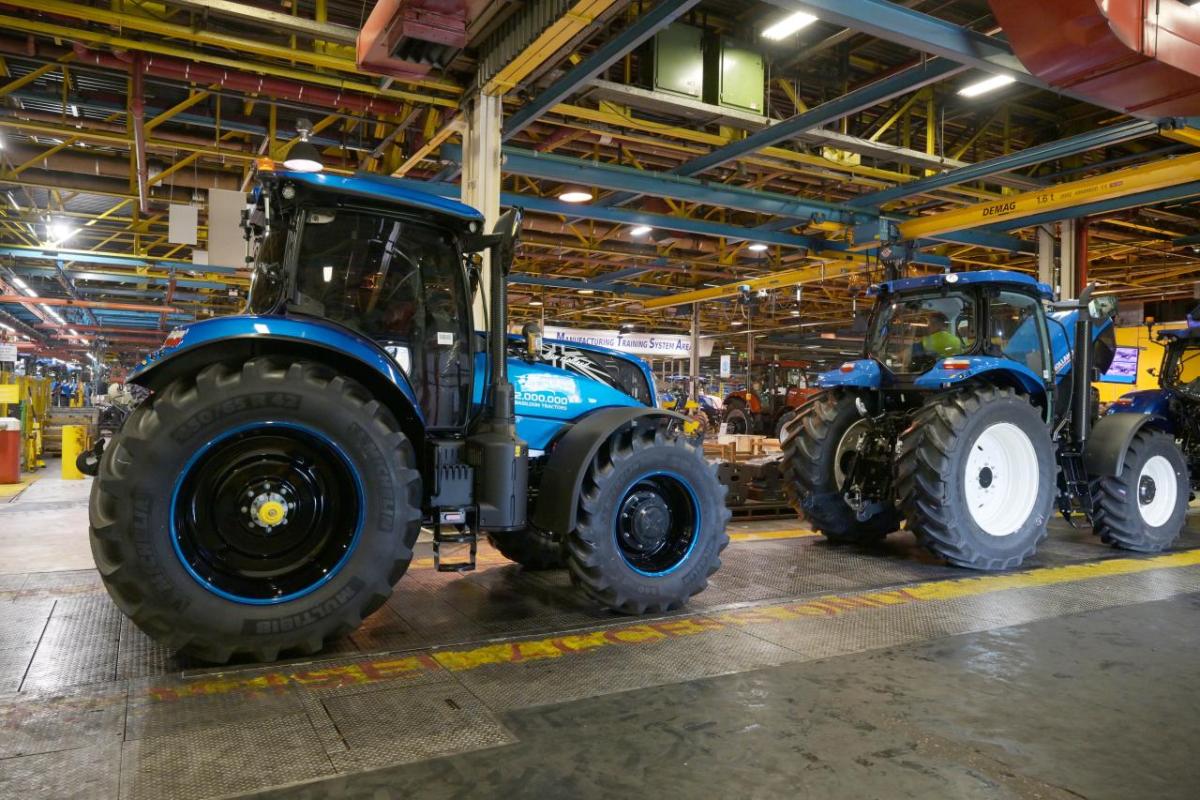New Holland Marks Two Millionth Basildon Tractor in Plant’s 60th Year
In the same year it celebrates 60 years of tractor production, the New Holland plant in Basildon, England, has built its two millionth tractor, a feat managed by only a handful of such facilities across the world.
The two millionth unit is a 225hp T7.225, one of the most popular T7 models produced at the Basildon plant. It has received a striking celebration livery comprising ‘candy blue’ body panels, New Holland silver and black graphics featuring the Union Jack flag of the United Kingdom, and a ‘2,000,000 Basildon Tractors’ logo, plus a New Holland leaf bonnet top. The tractor also features black wheels rims with candy blue rim edges.
“This is a major milestone in the life of our Basildon plant, and a mark of both the dedication of our skilled employees here and the loyalty of our customers worldwide, to whom we are extremely grateful,” said Carlo Lambro, New Holland Brand President.
“From the tractors of 1964 to those of today, we have come a long way in capability, capacity and technology, allowing our customers to farm more efficiently. What is unchanged, though, is our commitment at Basildon and across the whole of our business to continue developing the technology our customers need to sustainably power their farms into the future.”
In 1984, the 500,000th tractor was made, from the Q-cabbed Series 10 range launched three years previously, which ultimately spanned 44hp 2610 to 116hp 8210 models, introducing developments such as the SynchroShift synchromesh transmission.
Five years later, coinciding with the 1989 launch of the Generation III evolution of the Series 10 range, Basildon produced its one millionth tractor. The year also marked 25 years of manufacturing at the plant, celebrated with the release of a number of special edition Silver Jubilee 7810 tractors.
In July 2024 the 2 millionth tractor rolls out of the production line, marking a memorable milestone for the plant in Basildon and for the New Holland, a brand of CNH, globally.
Today, the plant’s production continues to be exported across the world and has grown to include the latest models powered by alternative fuels - such as methane and compressed natural gas. These are products of a recent development at the facility, the Alternative Fuels Centre of Excellence, a specialized R&D department focused on alternative propulsions.






